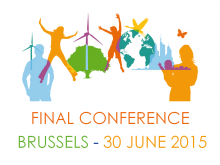The report assesses the current greenhouse gas (GHG) mitigation policy instruments in food and agriculture in the European Union (EU). The assessment of the food and agricultural policy mix is based on the criteria developed in Task 1.1 of the CECILIA2050 project and covers therefore the following three dimensions: environmental effectiveness, economic efficiency, and feasibility. The latter is further subdivided into the three aspects of administrative, political, and legal feasibility. In addition, the report takes the risks, priorities and market and other institutional imperfections into account that provide the rationale for public policy but may also hamper the scope and/or effectiveness of the current policy mix. On the basis of the instrument mix indentified in Task 1.2 of the CECILIA2050 project the assessment was carried out in a sample of four Member States including the UK, the Netherlands, Spain and Italy. The assessment is based on a comprehensive review of literature as well as on interviews with key stakeholders from the four case study countries and includes policy instruments that focus on both, the producer and the consumer.
The report is structured as follows: Chapter 3 provides a brief overview over the food and agriculture sector in Europe. It discusses different approaches to describe and delineate the agri-food sector and provides some statistics on the sector’s contributions to the economy, employment, and GHG. Chapter 4 discusses the evolution of the Common Agricultural Policy. Chapter 5 presents and discusses patterns, trends and projections of GHG emissions from agriculture and the agri-food sector. Chapter 6 identifies GHG mitigation policy instruments in Europe’s agri-food sector and presents an overview and preliminary assessment of policy instruments in the UK, the Netherlands, and Italy. The chapter also discusses the promotion of agricultural biogas in greater detail. In Chapter 7, the results of the stakeholder interviews from the four case study countries are presented.
The report concludes that an integrated climate policy the covers the entire agri-food supply chain at the EU or Member State level is not existing. The policy instruments that exist focus on different parts of the chain without much (or any) coordination. In the interviews, many stakeholders expressed their preference for an integrated policy that would cover the whole chain, suggesting that the present lack of integration could negatively affect the effectiveness and/ or efficiency of the policy mix. A second conclusion of the report is that many stakeholders emphasized the importance of considering GHG emission reduction in the agri-food sector within a broader context of sustainable agriculture. Hence, ‘optimality’ in this case would need to take other aspects of sustainability into account, including its environmental, economic and social dimensions.
Attachment:
Citation:
Funding:
Year of publication:
Number of pages:
Table of contents:
|
1 |
Executive summary |
7 |
|
2 |
Introduction |
8 |
|
3 |
The food and agriculture sector in Europe |
9 |
|
3.1 |
Introduction |
9 |
|
3.2 |
Greenhouse gas emissions |
11 |
|
4 |
The Common Agricultural Policy |
13 |
|
4.1 |
History and raison d’être |
13 |
|
4.2 |
Reforms |
16 |
|
4.2.1 |
The 1992 reform (MacSharry) |
16 |
|
4.2.2 |
Agenda 2000 |
17 |
|
4.2.3 |
2003 reform |
17 |
|
4.2.4 |
Simplifying the CAP: the single CMO |
18 |
|
4.2.5 |
The CAP post-2013 |
19 |
|
4.3 |
Summary |
21 |
|
5 |
Greenhouse gas emissions: patterns, trends and projections |
21 |
|
5.1 |
Agricultural emissions |
21 |
|
5.2 |
Total emissions from the agri-food sector |
24 |
|
6 |
Greenhouse gas mitigation policy instruments |
27 |
|
6.1 |
United Kingdom |
28 |
|
6.2 |
The Netherlands |
30 |
|
6.3 |
Italy |
32 |
|
6.4 |
The promotion of agricultural biogas |
36 |
|
7 |
Stakeholders |
40 |
|
7.1 |
Introduction |
41 |
|
7.2 |
United Kingdom |
42 |
|
7.3 |
Netherlands |
46 |
|
7.4 |
Italy |
50 |
|
7.5 |
Spain |
56 |
|
7.6 |
Concluding remarks |
59 |
|
8 |
Conclusions |
59 |
|
|
References |
62 |


